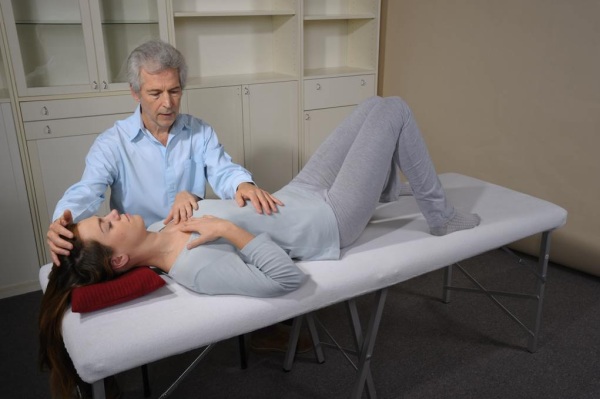By Thomas Attlee, founder of the College of Cranio-Sacral Therapy and author of Cranio-Sacral Integration
There are various approaches to cranio-sacral therapy, partly reflecting the development of the therapy over the years, partly suiting individual practitioners and differing styles. I see all these different approaches as part of a spectrum, complementary rather than antagonistic.
All cranio-sacral therapy is subtle. The spectrum ranges from the extremely subtle, with minimal physical input from the practitioner – an approach sometimes described as biodynamic, primarily concerned with creating a therapeutic space within which the forces of nature can enable profound healing, rather than actively doing anything.
The other end of the spectrum is still very subtle by any conventional standards, but may involve more physical input and intention from the therapist and a wider range of resources – an approach sometimes described as biomechanical (although the term mechanical is misleading in this context as it is not a mechanical process or even a particularly physical process, and is still a very subtle gentle energy-based approach).
The whole spectrum is valuable and all aspects of the spectrum can be integrated together for optimum effectiveness. This integrated approach is the approach that I teach at the College of Cranio-Sacral Therapy, and is the basis of the book Cranio-Sacral Integration.
The value of an integrated approach:
An integrated approach embraces the whole spectrum and enables the implementation of a wide range of resources, rather than laying down a particular method. The needs of each individual will inevitably vary and different circumstances will benefit from different responses. Just as a patient may sometimes benefit from orthodox medicine, osteopathy, homeopathy, or acupuncture, so within the field of cranio-sacral therapy, patients may respond to various levels of engagement and benefit from different aspects of the spectrum.
Cranio-Sacral Integration adopts an open flexible approach, developing a broad understanding of the value of different styles, and consequently providing the resources to respond effectively to each individual according to his or her needs.
Practitioner ‘presence’ is the key:
Ultimately, the most significant element in the therapeutic process is the ‘presence’ of the practitioner, the qualities that he or she brings to the therapeutic interaction. This is relevant for any practitioner, or doctor, or anyone working in health care, but it is particularly relevant in Cranio-Sacral Integration where we are working with subtle forces and quantum energies. The whole process of Cranio-Sacral Integration is an interaction between patient and practitioner, a process of entrainment, and the profoundly therapeutic presence of the practitioner plays a vital part in this interaction and in the therapeutic responses within the patient, and is therefore a crucial element in Cranio-Sacral Integration.
The way in which each practitioner develops these qualities is of course individual. There is no particular method that is suitable for everyone. But Cranio-Sacral Integration is much more than mere knowledge, technique and practical application. And the training in Cranio-Sacral Integration therefore involves, as a fundamental element, the development of these therapeutic qualities and practitioner presence, in order to enable the most profound healing of body, mind and spirit.
Copyright © Singing Dragon 2012.
